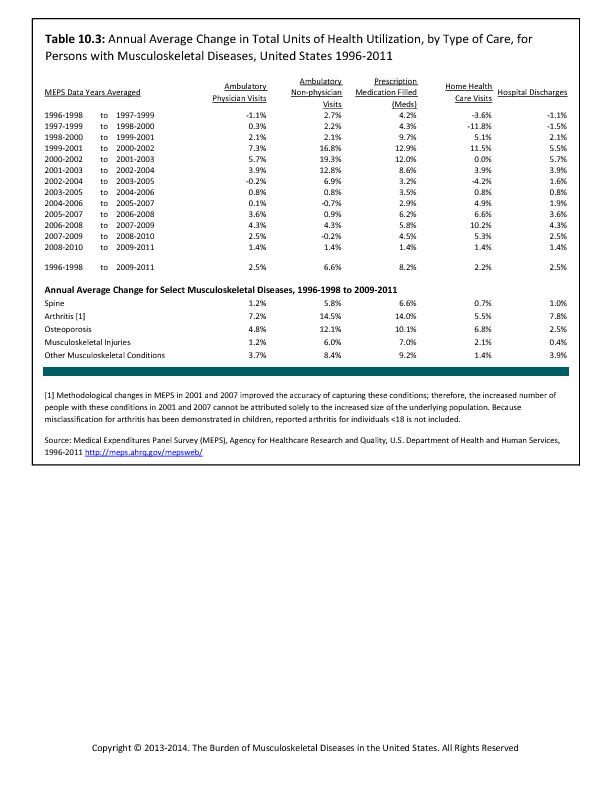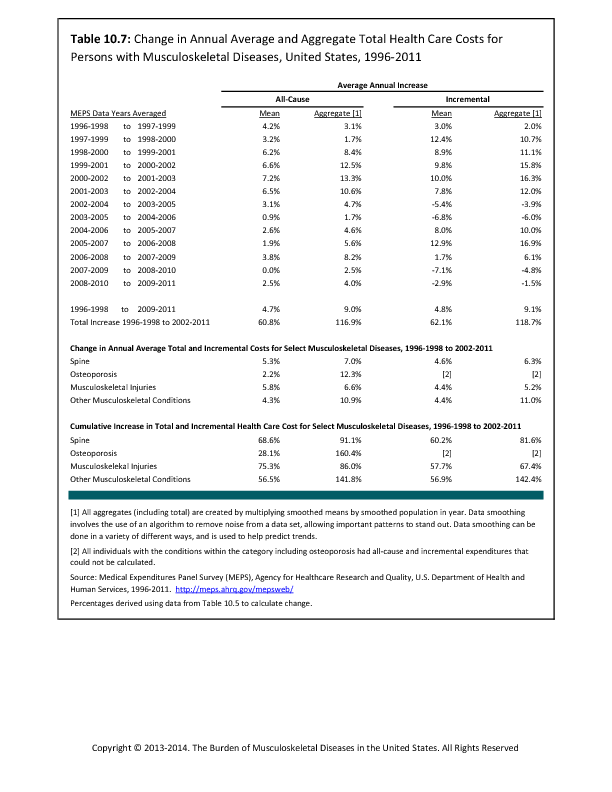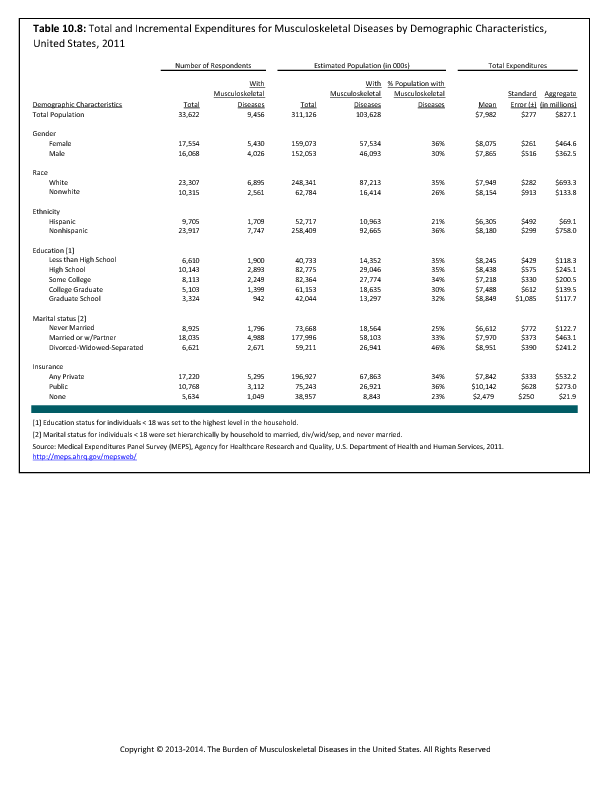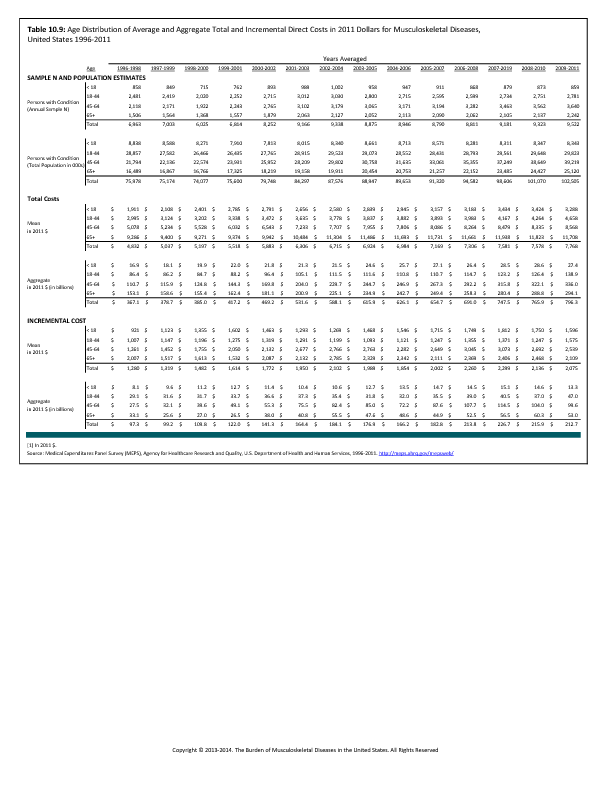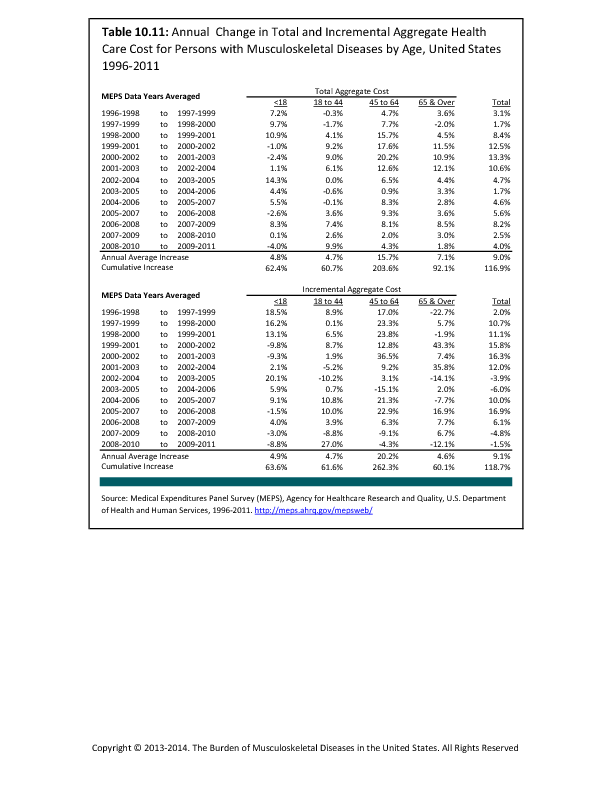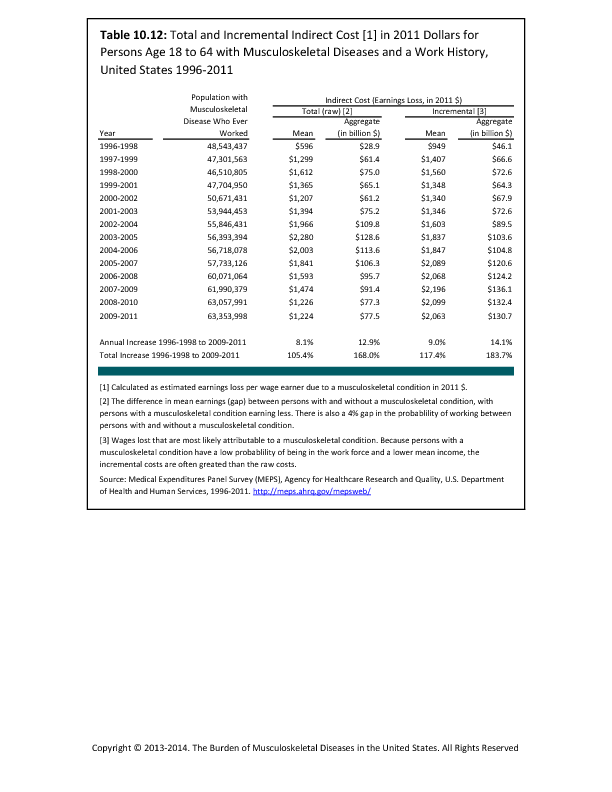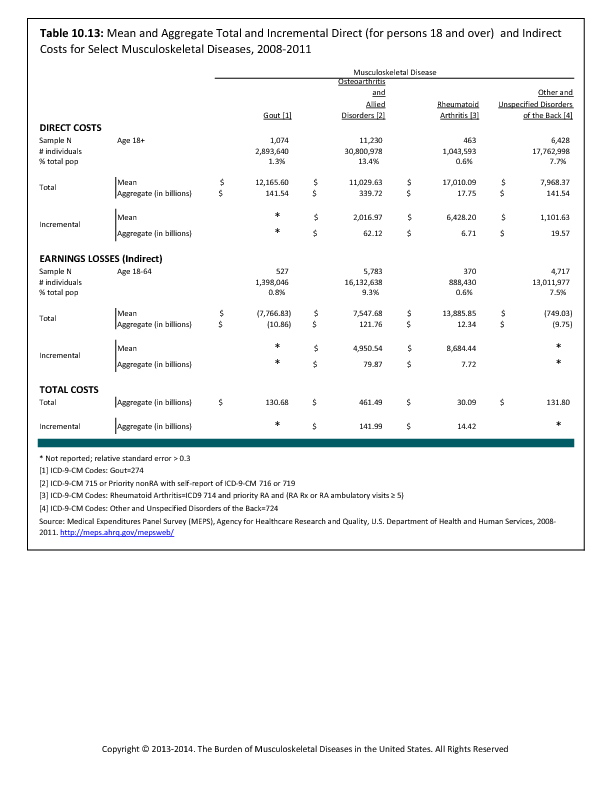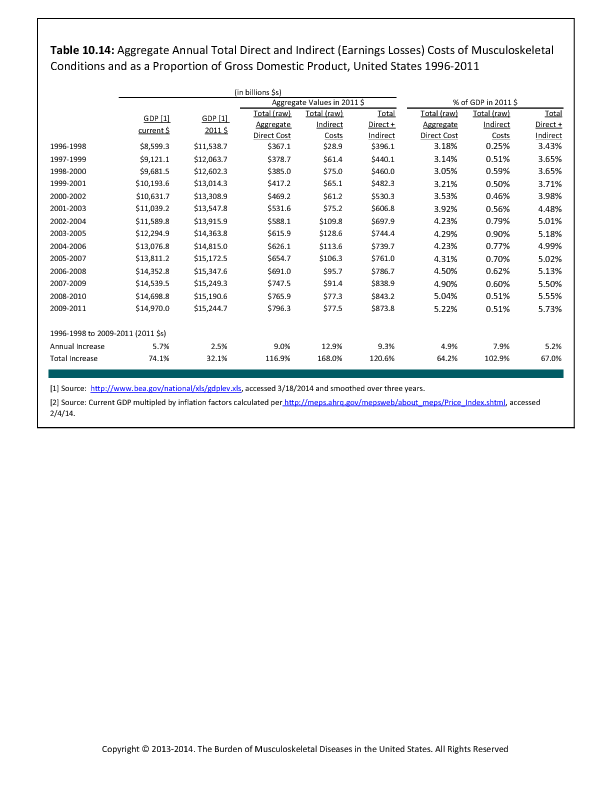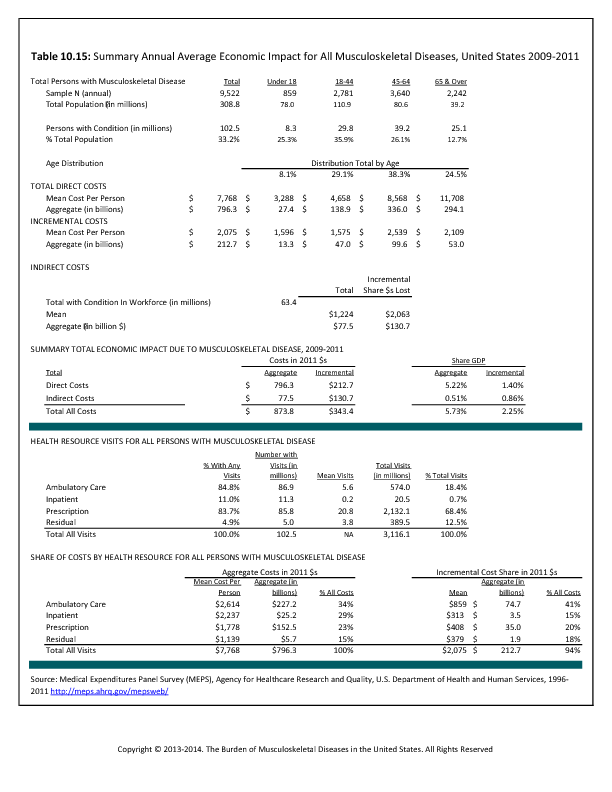Medical conditions in MEPS are self-reported and may result in misreporting of some conditions. With respect to musculoskeletal diseases, under-reporting might occur when physicians do not provide patients with a discrete diagnosis. For example, osteoarthritis may not be reported because it may be too mild to be recognized or treatment is included with other conditions and not distinct. Over-reporting of a condition could occur when respondents indicate they have a specific form of arthritis, for example, rheumatoid arthritis, even though their physician did not so indicate it. It should be noted that self-reporting of discrete medical conditions is lower than would be expected on the basis of epidemiological studies.1 As a result of differences in reporting, the measures of the aggregate economic impacts of discrete conditions summarized in Table 10.14 and select graphs throughout these pages may differ from those presented in the discussion of specific conditions in prior chapters. These discussions are based on larger samples, such as all musculoskeletal disease, or major subcategories, such as all forms of arthritis. Nevertheless, the data on expenditures do indicate, in broad stroke, the average economic impact for self-recognized disease and for conditions likely to be under-reported, such as osteoarthritis, a conservative estimate of aggregate economic impact. Estimates for discrete musculoskeletal diseases merged four years of MEPS data (2008-2011) to provide more stable estimates given the relatively few cases of each condition reported in individual years.
Average total direct cost for all four conditions studied—disorders of the back, rheumatoid arthritis, osteoarthritis and allied disorders, and gout—are relatively large. Over the period 2008 to 2011, per-person direct costs exceeded $12,000 a year for gout, $11,000 a year for osteoarthritis, $17,000 a year for rheumatoid arthritis, and just under $8,000 for disorders of the back. These costs aggregate to about $141.5 billion for gout, $339.7 for osteoarthritis, $17.8 billion for rheumatoid arthritis, and $141.5 billion for disorders of the back.
Average total earnings losses were highest for rheumatoid arthritis, $13,886 per year, followed by osteoarthritis at $7,548 per year. However, because of the lower prevalence of rheumatoid arthritis, the aggregate impact of the earnings losses for these two conditions were $12.3 billion and $121.8 billion, respectively. Persons with both gout and back disorders actually had higher earnings than the corresponding populations without those conditions. (Reference Table 10.13 PDF CSV)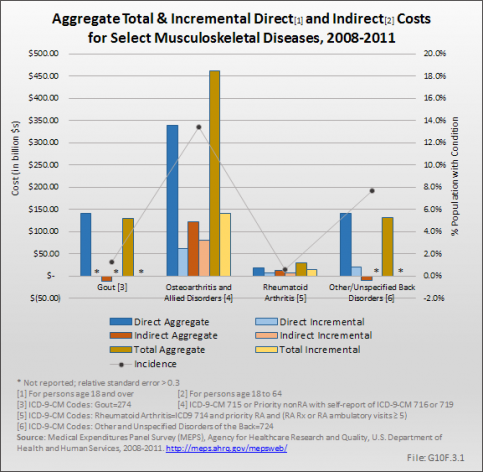
- 1. Lawrence R, Helmick C, Arnett F, et al: Estimates of the prevalence of arthritis and selected musculoskeletal disorders in the United States. Arthritis Rheum 1998;41:788-799.
Edition:
- 2014

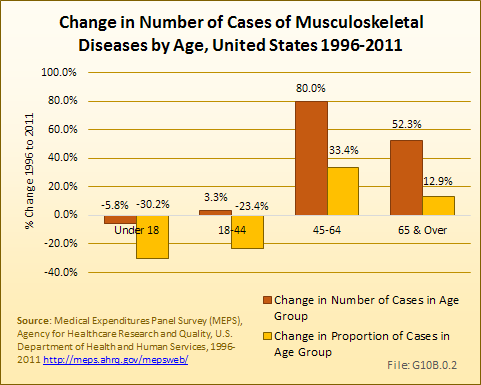
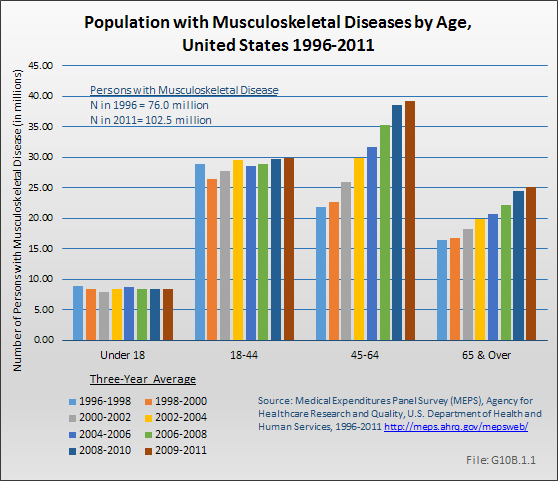
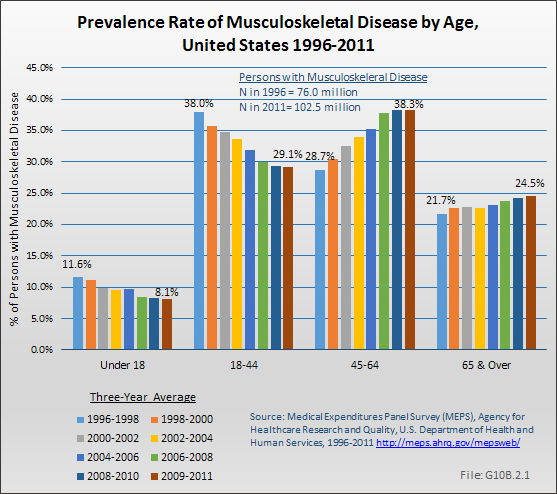


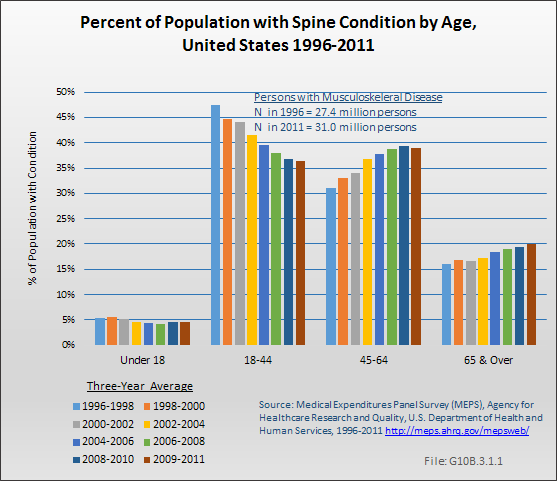







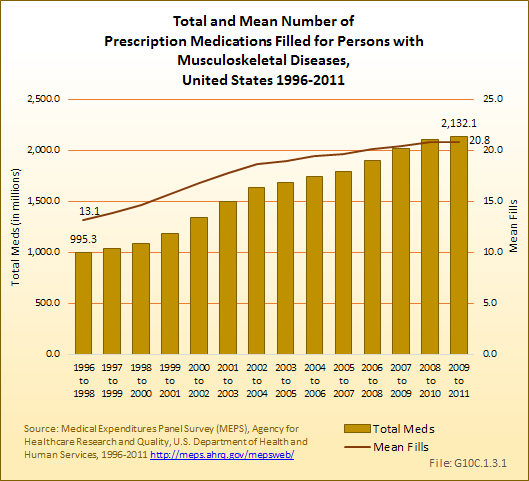
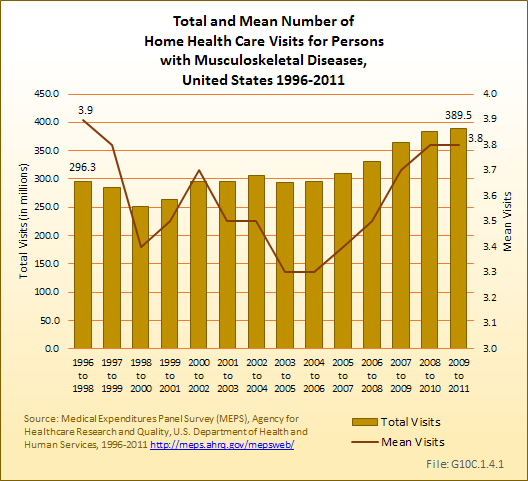


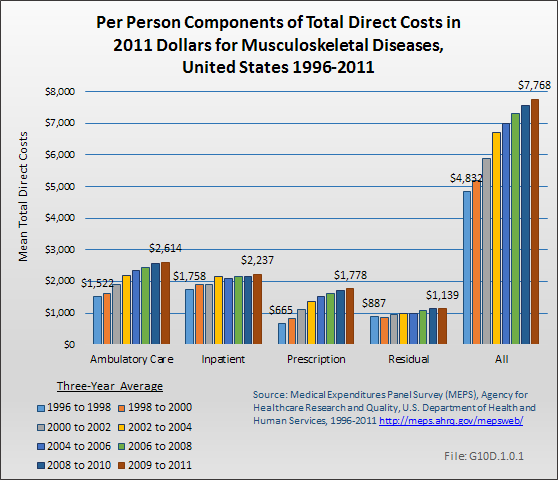

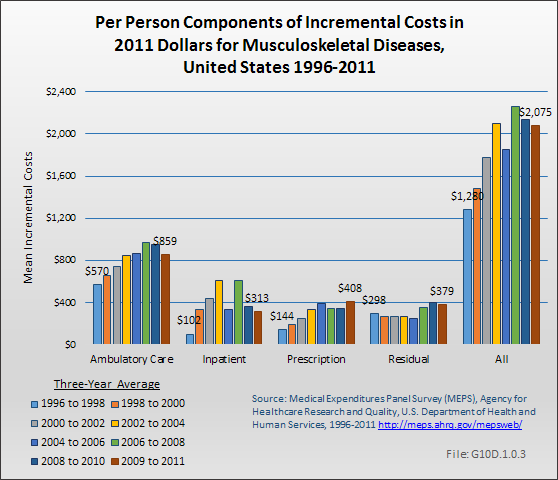


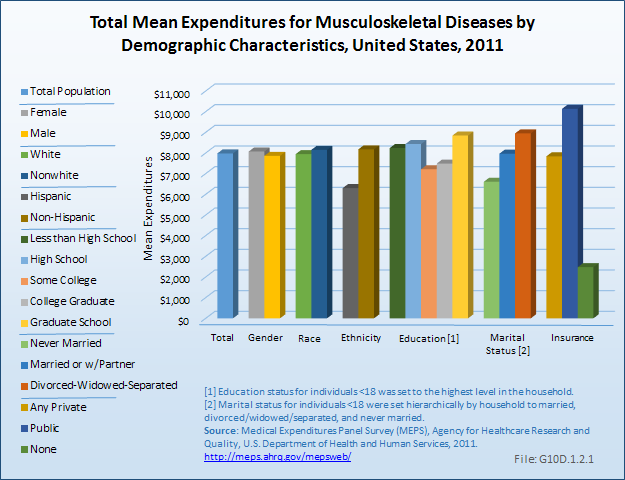
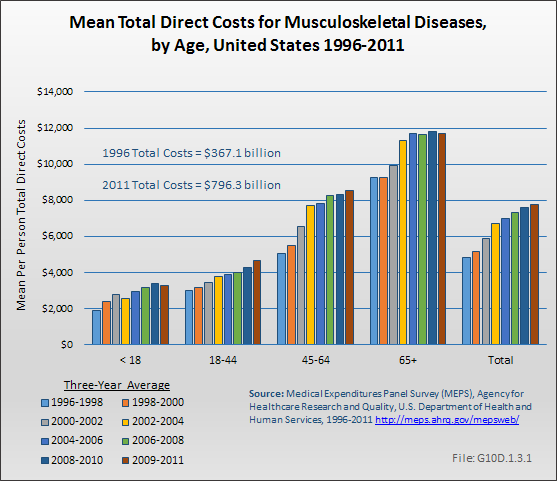

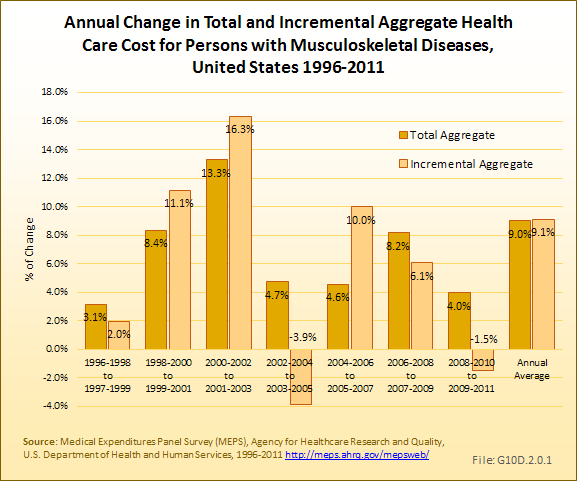

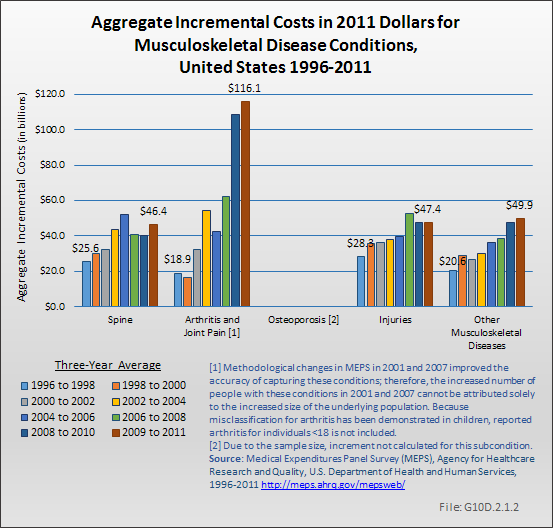
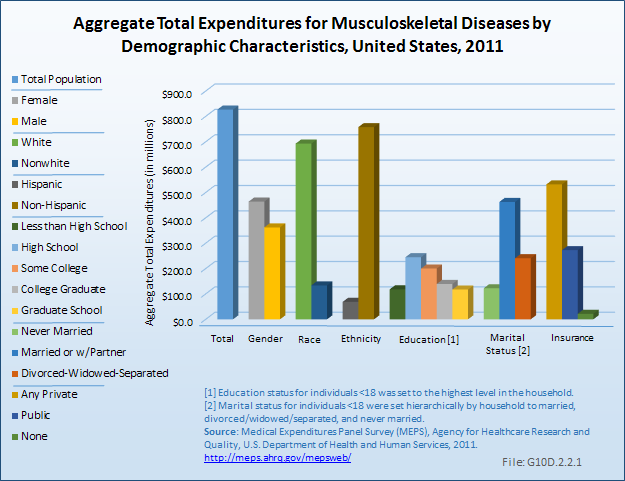
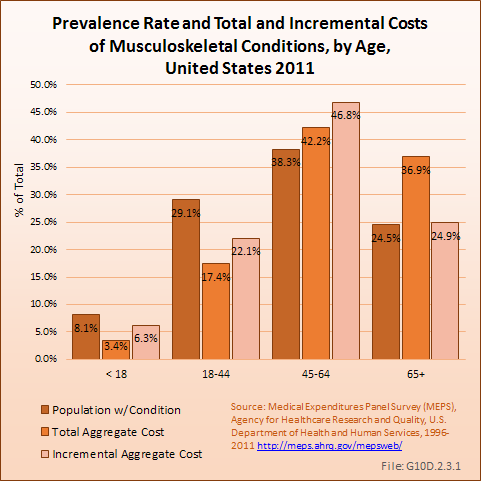
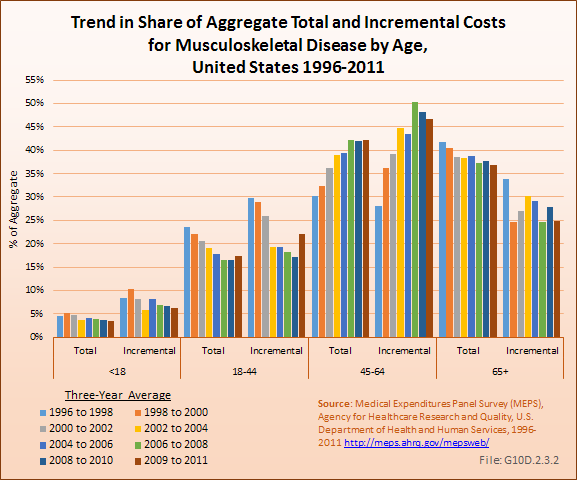


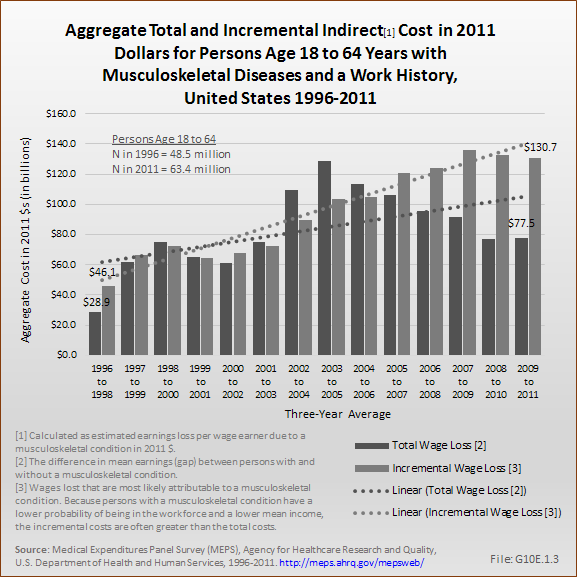



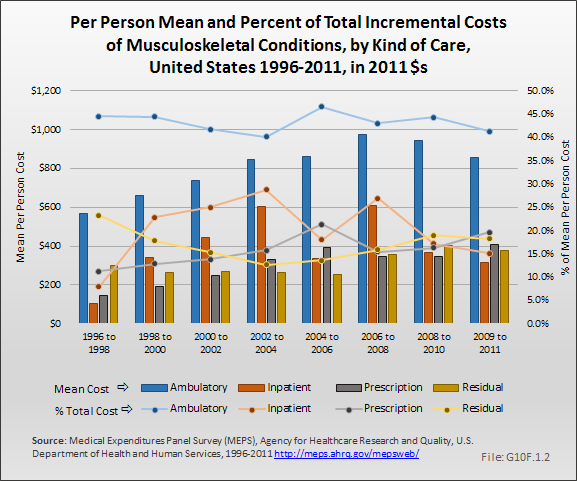
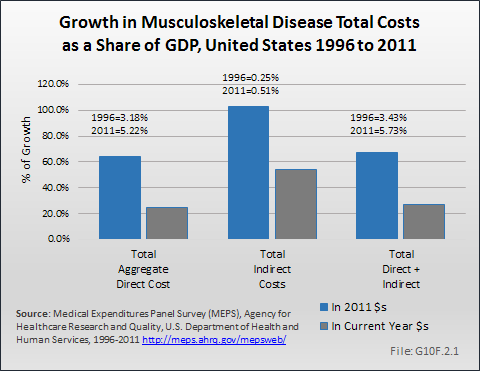


 Download as CSV
Download as CSV


